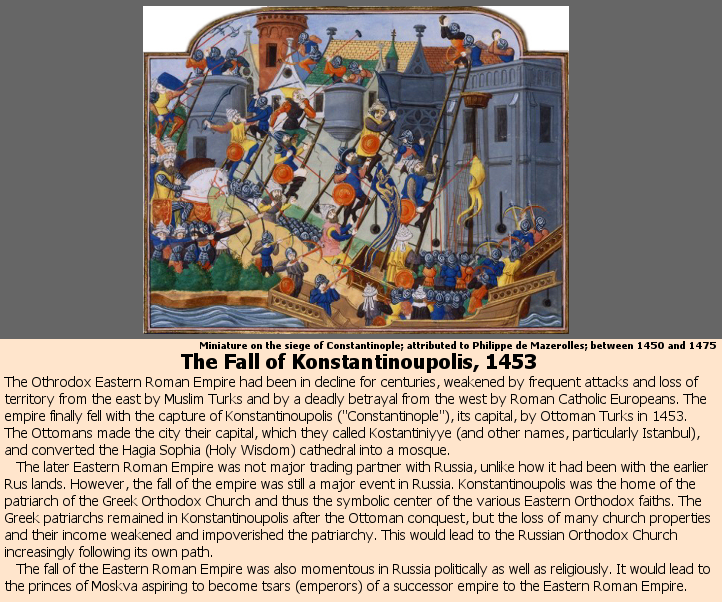

The Fall of Konstantinoupolis, 1453
The Othrodox Eastern Roman Empire had been in decline for centuries, weakened by frequent attacks and loss of territory from the east by Muslim Turks and by a deadly betrayal from the west by Roman Catholic Europeans. The empire finally fell with the capture of Konstantinoupolis ("Constantinople"), its capital, by Ottoman Turks in 1453. The Ottomans made the city their capital, which they called Kostantiniyye (and other names, particularly Istanbul), and converted the Hagia Sophia (Holy Wisdom) cathedral into a mosque.
The later Eastern Roman Empire was not major trading partner with Russia, unlike how it had been with the earlier Rus lands. However, the fall of the empire was still a major event in Russia. Konstantinoupolis was the home of the patriarch of the Greek Orthodox Church and thus the symbolic center of the various Eastern Orthodox faiths. The Greek patriarchs remained in Konstantinoupolis after the Ottoman conquest, but the loss of many church properties and their income weakened and impoverished the patriarchy. This would lead to the Russian Orthodox Church increasingly following its own path.
The fall of the Eastern Roman Empire was also momentous in Russia politically as well as religiously. It would lead to the princes of Moskva aspiring to become tsars (emperors) of a successor empire to the Eastern Roman Empire.